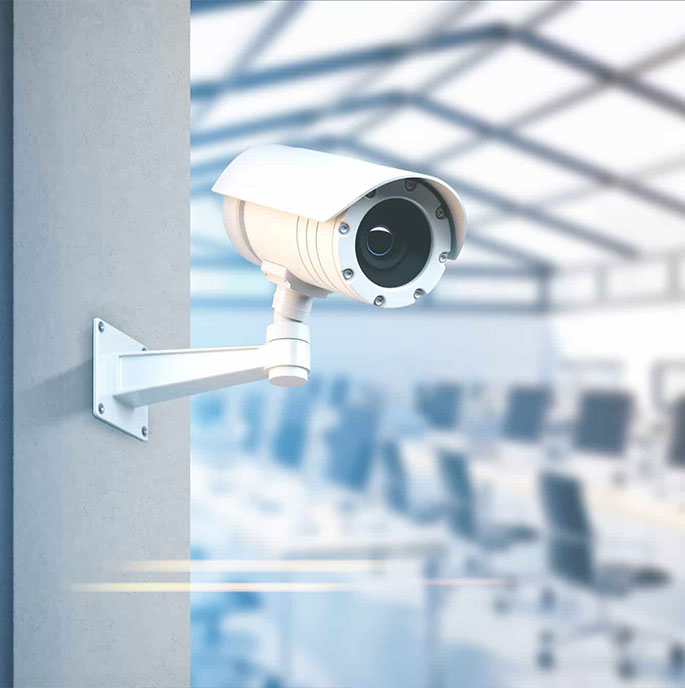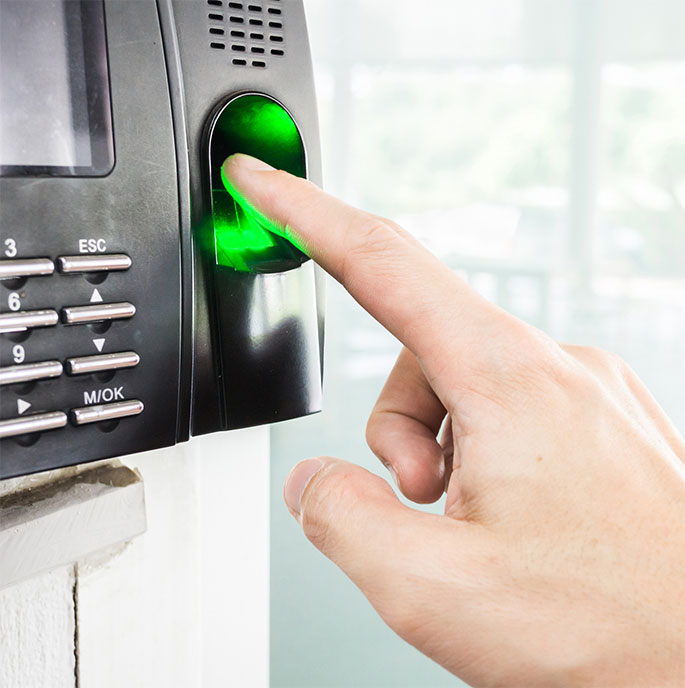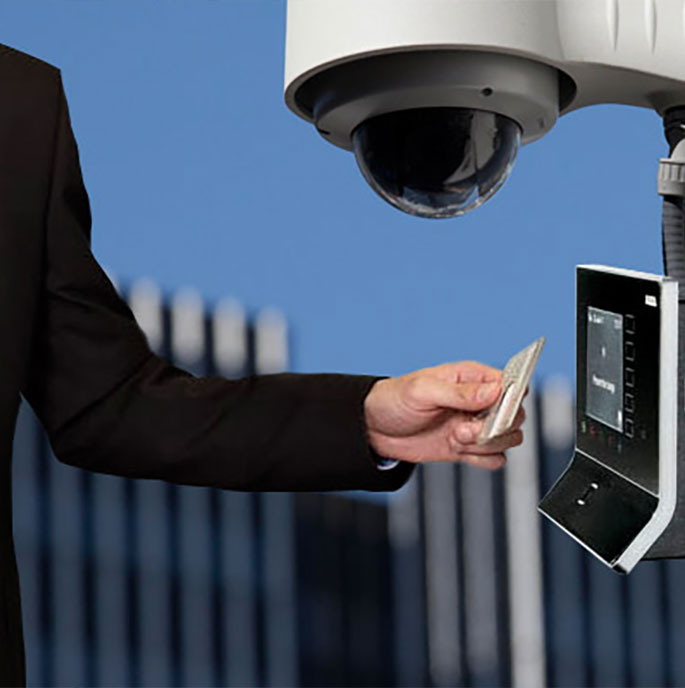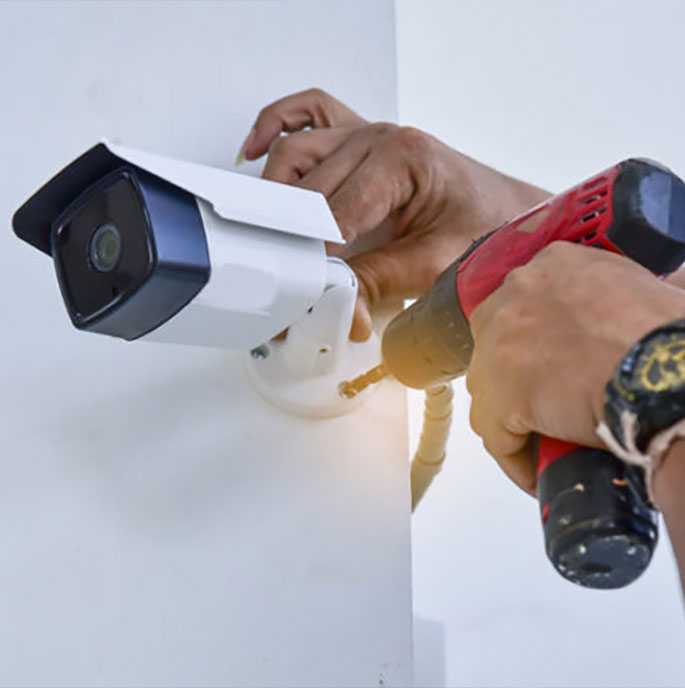CCTV installations are now usually IP (Internet Protocol) based. IP cameras are plugged into a network socket on a Local Area Network (LAN) in the same way as a PC. This then makes the camera’s video available to all network users who have the necessary authorisation.
IP camera images are viewed on Video Management Software (VMS) run on a PC or server.
IP CCTV has many advantages, including the ability to capture and transmit images of much higher quality (Megapixel Cameras) and removing the need for specialist CCTV recording hardware such as DVRs (digital video recorders), which are replaced by standard IT servers.
The move to network video has increased the ability to analyse video data, both live and recorded. Video analytics enables live images to be monitored by software for suspicious incidents, for example by drawing “virtual tripwires” on a scene. Forensic search enables the intelligent searching of stored video for incidents by specifying image characteristics such as colour and direction of movement.
Existing analogue CCTV system can be migrated to an IP system using encoders and decoders, which convert video signals from an analogue to a digital format. Video compression is utilised to reduce the bandwidth, and ever improving digital storage allows the retention of megapixel resolution images for longer time frames.
Good CCTV system design remains fundamental. Whether to use CCTV, where to place cameras and which cameras to use so as to maximise effectiveness in enhancing security remains key.


The means of identification can include items that are carried such as cards and tags or characteristics of the individual such as retinal or fingerprint patterns, known as biometrics. These identifying items are “read” by a reader and if the individual has the correct permissions, entry is granted by releasing the locking mechanism. The entry of the individual through the entrance is usually recorded on a database.
The design of an access control system usually focuses on four areas:
- Selection of the identifying token or characteristic
- Selection of the access control system software
- Selection of the door controller
- Selection of the door locking mechanism
Access Control systems are usually IP based, though most means of communication can be utilised, as the communications method is usually transparent to the system.
Access Control systems vary in their capability and price, with multi-site and multi-country capabilities being possible. To allow for future flexibility it is particularly important to ensure that one is not locked in to a proprietary system supplied by one installer only.
Leigh Visual has designed and installed many integrated security systems, primarily for UK government institutions. Each requirement is different and requires a proper understanding of the client’s needs and priorities before a solution is proposed.
It is rare to find a site that offers a blank canvas. There are usually existing systems in place, some obsolete, which need to be integrated into the proposal. The cabling infrastructure is often old and the equipment poorly maintained.
Leigh Visual pride themselves in being able to offer imaginative solutions to circumvent these common issues. With expertise in all electronic security disciplines, and more than 30 years’ worth of experience, we are confident that we can offer a solution to the most challenging requirements.


Leigh Visual offers a variety of maintenance contracts, from fully comprehensive (where most costs are covered) to standard (where callouts and replacement equipment is chargeable).
Customers can report callouts by telephone or by using the web based reporting facility.
All service engineer vehicles have tracking units, allowing an email to be automatically generated, stating the engineer has arrived on or left site. Each visit generates a report stating the nature of the problem and what is/was required to solve it.
Routine maintenance is logged in detail and identifies what elements of the system are within specification, and which are not. A full report is issued after each maintenance visit.

